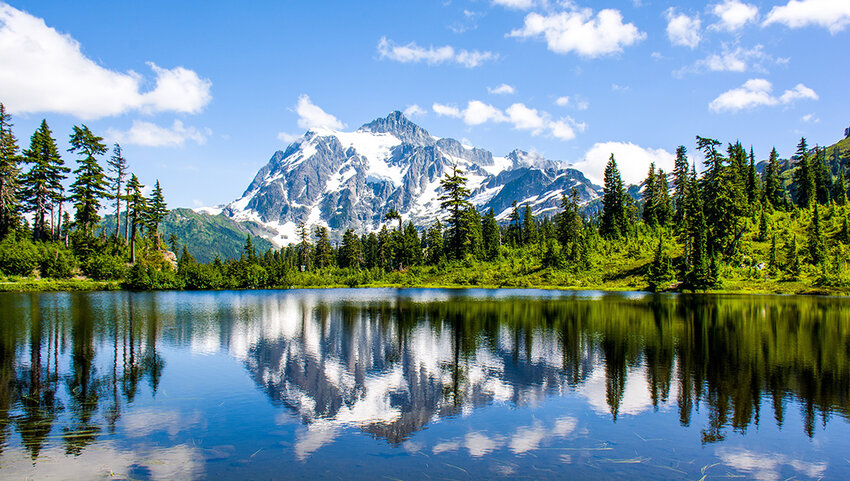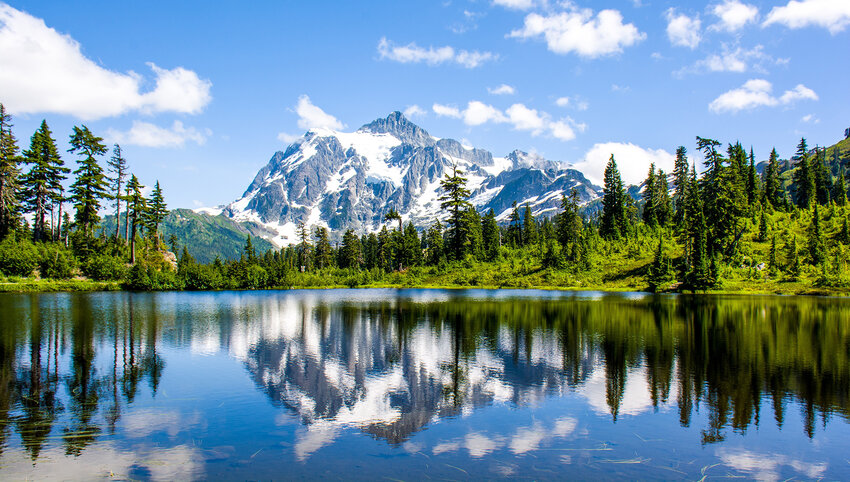The 63 U.S. national parks boast some of the most stunning protected land anywhere in the country. But while Yellowstone and the Grand Canyon are widely known and attract millions of tourists each year, there are several hidden gems among the national parks that are just as likely to leave you amazed at their unmitigated beauty. From remote Pacific territories to the valleys of Appalachia, these parks offer a less crowded yet equally awe-inspiring experience. Here are six U.S. national parks that you don’t know, but should.
Isle Royale National Park, Michigan

Located in the waters of Lake Superior, Isle Royale National Park is a challenge to get to, but well worth the trip. This protected area was established by FDR in 1940 as part of an effort to, “conserve a prime example of North Woods Wilderness.”. Isle Royale’s 572,000 acres are only accessible by boat or seaplane, which explains why it only welcomes around 20,000 visitors annually. But visitors who make the trip are rewarded for their efforts, and spend an average of 3.5 days exploring the untouched wilderness — that’s significantly more than the mere four hours that the average person spends visiting other U.S. national parks.
Isle Royale is best known for its unique animal population, as the park is home to moose that first arrived sometime in the early 1900s. Furthermore, gray wolves are known to roam the land, providing spectacular opportunities to watch these creatures from afar. If you’re planning a visit, be sure to come to Isle Royale during the warmer months, as the park is closed during wintertime due to the region’s icy conditions.
Petrified Forest National Park, Arizona

The Grand Canyon may be the best known national park in Arizona, but there's another park with its own fascinating geological history. Located southeast of the canyon, Petrified Forest National Park is just as stunning to explore, with a vibrant red-and-white-colored landscape as far as the eye can see. Petrified Forest — which was established by Theodore Roosevelt as a National Monument in 1906 — finally earned its national park status in 1962. The park covers 146 square miles of area, and is primarily known for its vast array of colorful petrified wood that gives the region its name.
This “forest” of red and white petrified food is composed primarily of solid quartz, which formed due to a centuries-long decaying process that began over 200 million years ago. There are even Triassic-age rock formations dating back 225 million years that can be found on the park grounds, offering a unique glimpse at eons of geological history and evolution. In a cultural sense, Petrified Forest National Park was once inhabited by the Puebloan people around 1200 CE. Park visitors can learn more about that society by visiting certain archaeological sites such as Puerco Pueblo, remnants of which are still visible today in the form of human-made rock structures and detailed rock carvings.
Dry Tortugas National Park, Florida

Dry Tortugas National Park is located 70 miles west of Key West, and is among the southernmost points in the continental United States. What separates Dry Tortugas from other national parks is that only a small portion of its 100 square miles is land, while around 99% of the park is located underwater. These waters are home to some of the most stunning and untouched coral reefs anywhere in the country, which total around 200 miles in length. Some spectacular marine life calls these reefs home, including sea turtles (the word “tortuga” means “turtle” in Spanish) sharks, tropical fish, and massive Goliath groupers that can weigh up to 800 pounds.
The park is also home to the 19th-century Fort Jefferson, the largest brick masonry structure in the western hemisphere. Over 16 million bricks make up this impressive fortress, which was constructed beginning in 1846. The surrounding waters of Dry Tortugas National Park are also a desirable spot for divers, as the region is home to countless shipwrecks. One of the more famous wrecks is that of the Nuestra Señora de Atocha, which produced the largest underwater treasure discovery thus far back in 1985.
New River Gorge National Park, West Virginia

As the country’s newest national park — only earning the distinction in 2020 — New River Gorge in West Virginia is not known to many people yet. But this Appalachian wilderness is a trove of spectacular natural scenery. Stretching over 70,000 acres, the park is home to the New River, one of the oldest rivers anywhere on the continent, at an estimated 65 million years old. It’s also a unique waterway in being one of the few rivers in the entire world that flows south to north, a characteristic shared with Egypt’s Nile River.
Looming high above the New River is the equally impressive New River Gorge Bridge, a marvelous feat of engineering that is the fifth-longest single arch bridge in the world. Visitors can take guided tours of the catwalk underneath the bridge, providing sublime and unobstructed photo opportunities of the surrounding terrain. There’s no better time to visit New River Gorge National Park than the third Saturday of October for Bridge Day. This celebration welcomes thousands of spectators each year who are invited to walk across the bridge and watch thrill-seeking BASE jumpers leap off the bridge toward the waters below.
North Cascades National Park, Washington

North Cascades National Park is a mere three-hour trip from nearby Seattle, making it among the most accessible National Parks in the country. Despite its proximity to the Seattle metropolitan area, the park still appears almost prehistoric in nature. Highlighted by its rugged mountain peaks that are capped by ancient glaciers, North Cascades covers 505,000 acres of land, with its highest point located atop the 9,220-foot-tall Goode Mountain.
The park is home to over 300 glaciers, more than anywhere else in the United States. These glaciers are responsible for feeding scenic bodies of water such as Diablo Lake, which boasts a crystalline, turquoise hue. The waters are their most vibrant during the summer months due to nearby glacial melt, which can be best experienced aboard a kayak or from high above the lake at the Diablo Lake Overlook. Animal lovers are also drawn to the North Cascades, as the park grounds are home to a variety of animal species from grizzly bears to wolverines.
National Park of American Samoa

In addition to 30 U.S. states, two U.S. territories have national parks within their boundaries. One is the U.S. Virgin Islands, and the other is found in the waters of the Pacific Ocean at the National Park of American Samoa. This is the only U.S. National Park located south of the equator, which explains its unique biodiversity. The park contains a mixt of tropical rainforests and Pacific coral reefs that are found nowhere else in the national park system. Furthermore, 30% of the park’s plant species are endemic, turning it into one of the most fascinating ecosystems in the country.
At the National Park of American Samoa, you can choose to stroll along the sandy, paradisiacal beaches or venture into the rainforests where you might come across the only native animal species to the island, a species of fruit bat with a massive 3-foot wingspan. The park also provides lovely oceanside opportunities to see sea turtles and breaching humpback whales. One particularly interesting aspect of the National Park of American Samoa is how it’s interwoven with the culture of the local Samoan population. The park is leased to the United States government by Samoan village councils who work in tandem to ensure the preservation of this sacred natural land.





